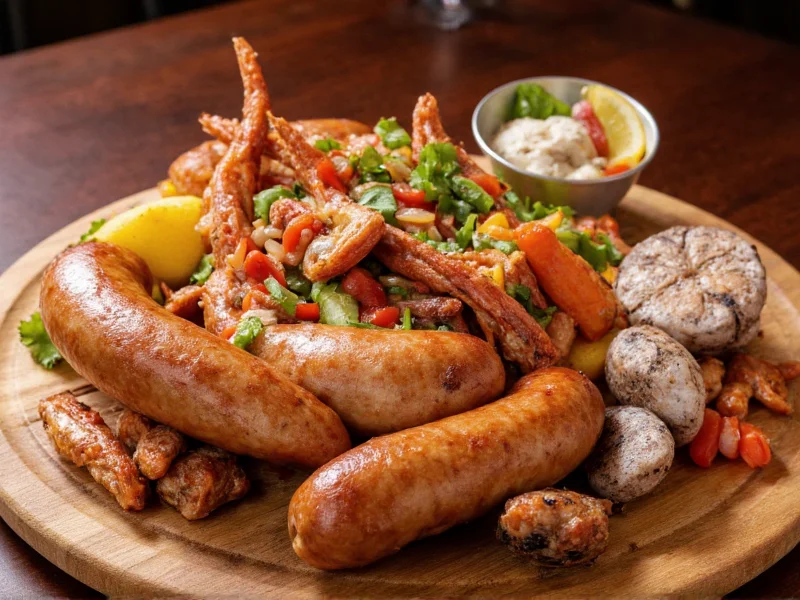Alaska's distinctive food culture combines indigenous knowledge with frontier resourcefulness, creating a unique category of products that merge sausage-making traditions with the state's legendary seafood bounty. Unlike conventional sausage products, Alaskan varieties often incorporate game meats like reindeer, moose, and caribou alongside salmon, halibut, and other regional seafood.
The Roots of Alaskan Food Traditions
Long before European contact, Alaska Native communities developed sophisticated food preservation techniques essential for surviving harsh winters. Indigenous groups like the Iñupiat, Yup'ik, and Tlingit traditionally relied on fermented fish heads, dried salmon, and rendered marine mammal oils. Russian traders later introduced sausage-making techniques in the 18th century, creating an unexpected fusion that would evolve into today's distinctive Alaskan meat products.
Traditional Alaskan sausage preparation differs significantly from European methods. Rather than using pork casings and fillers, early Alaskan sausage makers utilized natural casings from marine mammals and incorporated local ingredients. This resourceful adaptation created products uniquely suited to the Alaskan environment and available resources.
Signature Alaskan Sausage and Seafood Products
Modern Alaskan food producers maintain these traditions while meeting contemporary food safety standards. The most authentic products feature:
| Product Type | Key Ingredients | Traditional Preparation |
|---|---|---|
| Smoked Salmon Sausage | Wild-caught salmon, spices, natural casings | Cold-smoked over alder wood for 12-24 hours |
| Reindeer Hot Dogs | Reindeer meat, minimal fillers, traditional spices | Slow-cooked then lightly smoked |
| Seafood Chowder Sausage | Combination of fish, shellfish, game meat | Simmered with traditional herbs and roots |
| Caribou Breakfast Sausage | Lean caribou meat, wild berries, native spices | Quick-fried preparation maintaining moisture |
Authentic Production Methods
True Alaskan sausage and seafood products follow specific preparation protocols that distinguish them from mass-produced alternatives. Traditional smoking techniques using local woods like alder and spruce impart distinctive flavors impossible to replicate elsewhere. Many producers still use natural casings rather than synthetic alternatives, maintaining texture and authenticity.
The most reputable Alaskan food producers emphasize traceability, with documentation showing the origin of each ingredient. Look for products specifying "wild-caught" rather than farm-raised seafood, and "free-range" or "wild-harvested" game meats. Authentic Alaskan sausage makers typically avoid artificial preservatives, relying instead on traditional smoking and drying methods for preservation.
Finding Genuine Alaskan Products
When seeking authentic Alaska sausage and seafood products, consider these factors:
- Origin verification - Products should clearly state they're made in Alaska with Alaskan-sourced ingredients
- Producer transparency - Reputable companies provide details about their sourcing and preparation methods
- Certifications - Look for Alaska Grown certification and USDA processing facility numbers
- Seasonality awareness - Traditional Alaskan products often reflect seasonal availability of ingredients
Many Alaskan producers now offer nationwide shipping with proper cold-chain logistics to maintain product integrity. When purchasing online, check for clear shipping protocols and temperature control measures to ensure product quality upon arrival.
Culinary Applications and Pairings
Traditional Alaskan sausage and seafood combinations feature in numerous regional dishes. The most authentic preparations include:
- Smoked salmon sausage served with akutaq (Eskimo ice cream) for contrast
- Reindeer hot dogs accompanied by traditional berry relishes
- Seafood chowder sausages paired with native potato varieties
- Caribou breakfast sausage with wild mushroom and seaweed accompaniments
Chefs specializing in Alaskan cuisine emphasize minimal processing to showcase the natural flavors of these ingredients. Unlike conventional sausage pairings, traditional Alaskan combinations often feature wild herbs like osha root and beach greens rather than standard European seasonings.
Sustainability and Cultural Preservation
Responsible Alaskan sausage and seafood producers maintain strong commitments to sustainable practices. Many operate under strict state regulations governing wild game harvesting and seafood collection. The most authentic producers work directly with Alaska Native communities, supporting traditional foodways while ensuring ecological balance.
When evaluating products, look for evidence of sustainable practices including:
- MSC (Marine Stewardship Council) certification for seafood components
- Documentation of responsible game meat sourcing
- Partnerships with Alaska Native corporations or communities
- Transparency about harvest methods and seasons











 浙公网安备
33010002000092号
浙公网安备
33010002000092号 浙B2-20120091-4
浙B2-20120091-4